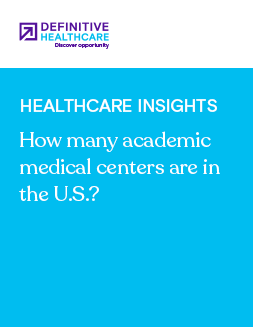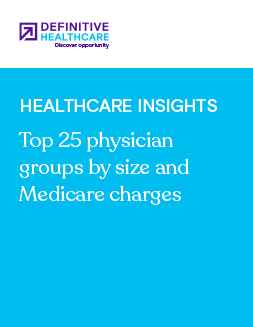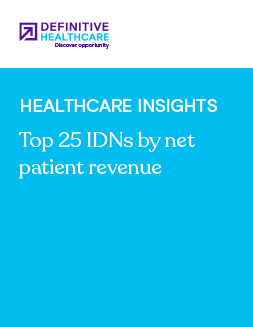Healthcare Insights
Top 10 diagnoses by cardiologists
Cardiologists are healthcare professionals who specialize in the cardiovascular system (the heart and blood vessels). The cardiovascular system regulates and delivers oxygen and nutrients to your body’s vital organs. Cardiologists are doctors who have extra education and training in preventing, diagnosing and treating heart conditions. They are experts on the heart muscle itself and the arteries and veins that carry blood.
We used data from the Definitive Healthcare Atlas All-Payor Claims Dataset to track patient visits to cardiologists. The following table shows the most frequentprimary diagnoses for patients seen by cardiologists in 2023.
| Rank | ICD-10 code | ICD-10 description | % of total diagnoses in 2023 | Explore dataset |
|---|---|---|---|---|
| 1 | I10 | Essential (primary) hypertension | 7.97% | Explore |
| 2 | I2510 | Atherosclerotic heart disease of native coronary artery without angina pectoris | 4.34% | Explore |
| 3 | E785 | Hyperlipidemia, unspecified | 3.24% | Explore |
| 4 | R9431 | Abnormal electrocardiogram [ECG] [EKG] | 2.71% | Explore |
| 5 | I480 | Paroxysmal atrial fibrillation | 2.41% | Explore |
| 6 | R079 | Chest pain, unspecified | 2.10% | Explore |
| 7 | R0602 | Shortness of breath | 1.94% | Explore |
| 8 | R002 | Palpitations | 1.92% | Explore |
| 9 | E782 | Mixed hyperlipidemia | 1.76% | Explore |
| 10 | I4891 | Unspecified atrial fibrillation | 1.62% | Explore |
Fig. 1 Analysis of data from Definitive Healthcare’s Atlas All-Payor Claims Dataset. Data is sourced from multiple claims clearinghouses for the calendar year 2023 (the last full year of data available). Data accessed October 2024.
What are the most common conditions for cardiologist visits?
ICD-10 code I10, essential hypertension, was the most frequent diagnosis behind cardiology visits. This condition made up nearly 8% of patient encounters with cardiologists in 2023. Essential hypertension describes abnormally high blood pressure that is not the result of a medical condition. High blood pressure can occur in almost anyone for a variety of reasons, making it a very common diagnosis.
The second most common diagnosis on cardiologist claims is IDC-10 code I2510, or atherosclerotic heart disease of native coronary artery without angina pectoris. Accounting for 4.34% of all patient encounters with cardiologists, this condition occurs when the patient’s blood vessels narrow throughout the body but does not result in any chest pain or discomfort.
The third most frequent reason patients visits to cardiologist is for hyperlipidemia (unspecified) (IDC-10 code E785). This condition accounted for 3.24% of all patient encounters with cardiologists and happens when your blood has too many lipids (fats). These fats can include cholesterol and triglycerides; however, in this case, the term unspecified means that the specific fat is undetermined.
How are heart conditions diagnosed?
Cardiologists rely on an array of techniques and technologies to diagnose heart conditions. Routine physical examinations can identify signs of heart disease like irregular heartbeat, swollen extremities, or abnormal heart sounds.
Electrocardiograms, echocardiograms, and CT/MRI scans all provide noninvasive methods to detect arrhythmias and structural deformities. Stress tests and blood tests can also help cardiologists assess heart health and the risk of heart attacks.
In more extreme cases, a cardiologist may recommend catheterization with angiogram, where a thin tube is inserted into a blood vessel to capture images of the heart, arteries, and potential blockages.
Learn more
Healthcare Insights are developed withhealthcare commercial intelligence from the Definitive Healthcare platform. Want even more insights? Dive into the largest cardiology physician groups or explore cardiology KOLs. Start a free trial now and get access to the latest healthcare commercial intelligence on hospitals, physicians, and other healthcare providers.


